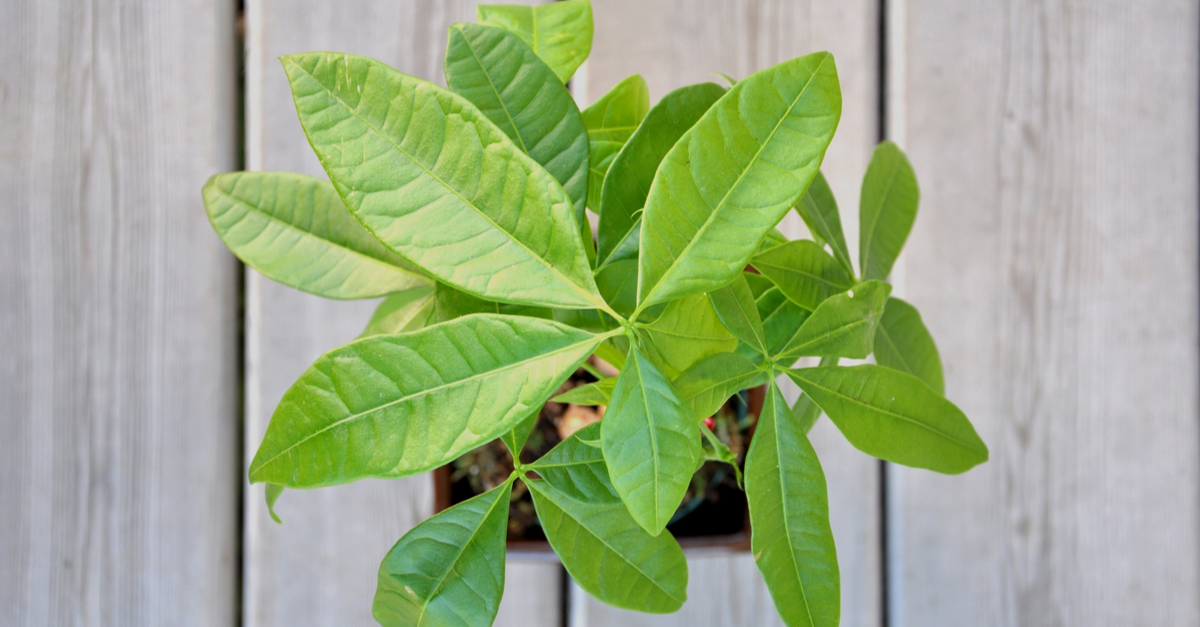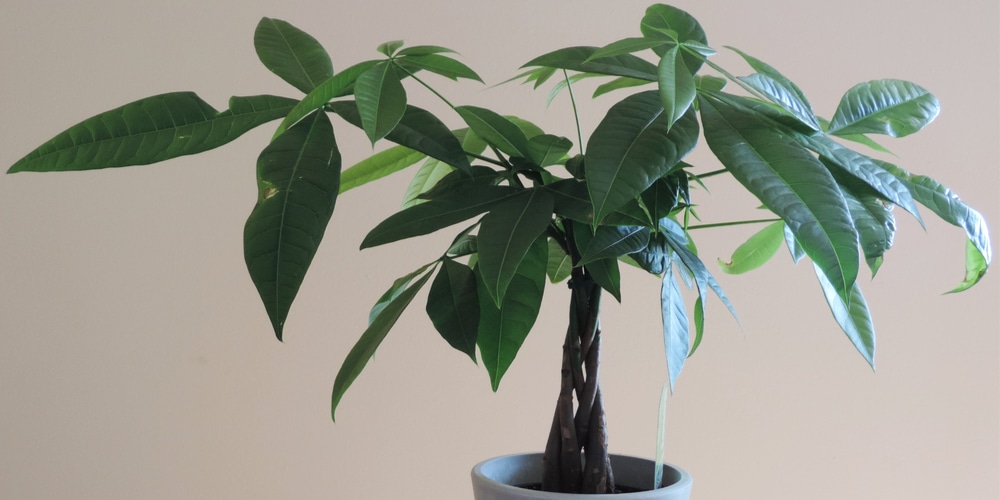The Money Tree, native to South and Central America, is a stunning plant to grow indoors. With their braided trunks, you can grow these plants in different styles by training them to resemble a particular shape you like. You can keep them small or let them grow tall and bushy. No matter where you decide to place them, they will be a stunning addition to your interiors.
While this plant is not particularly demanding, you’ll need to fulfill its requirement for it to thrive. If you wonder why is my money tree leaning, you are not alone. You might not be giving your plant adequate lighting, nutrients, or water. Luckily, you can revert it. To prevent that from happening to you, we put together an essential guide concerning the best methods to fix your plant’s leaning. To find out how to provide your money tree with adequate care and have it thrive in your indoors, keep reading.
Why Is My Money Tree Leaning?

Many plants lean towards a source of light or in a particular direction when not given adequate care. The behavior takes the name of “phototropism” and indicates the plant doesn’t have the energy to grow neatly. The good news is that you can fix such behavior by taking the right actions. Here you’ll find some of the common causes for your plant to lean and tips on what to do about it.
Inadequate Lighting
One of the most common causes of this behavior is the lack of proper lighting. While Money Trees don’t need intense direct sunlight, they require a couple of indirect hours of sun per day. Without that, your plant will start moving towards the closest source of light. That could be a close-by window, but even a light bulb, or a door.
Interestingly enough, something similar happens when your plant gets too much sunlight. Direct sunlight makes them weak and damages the stem, causing it to gradually lean. Such a plant doesn’t have the energies to support itself (or its leaves).
To fix the problem, place your money tree close to an east or south-facing window to ensure it gets the amount of light it needs. Consider adding a sheer curtain to filter the sunlight to prevent it from getting sunburned.
If your plant only gets light from one side, you might notice the side in the shade looks sad. To prevent that from happening, rotate your pot once in a while. Doing so will ensure all sides get enough light to keep growing in the right direction. A good rule of thumb is to rotate your plant every time you water it.
Too Much or Too Little Water
Watering your plant is a crucial step to ensure its healthy growth. Overwatering can cause severe issues, attract pests, and damage your plant’s roots. Giving your Money tree too much water can cause it to lean by hacking its ability to absorb nutrients from the soil. This plant does well with deep but infrequent watering. The soil should be dry when you refill it with water.
Money trees can’t go much time without water. While they don’t need a lot of it, none will cause your plant to become weak. Check the soil once every two weeks: when the top 2 to 4 inches are dry, it is time to water your money tree. To help you understand how much water your plant needs, water it until it flows out the drainage holes in the pot. Eliminate the excess from the tray to avoid damage to your tree’s roots.
Reduce the frequency and amount of watering during the winter. Money trees go dormant in the cold season and don’t require much water and nutrition.
It Needs Fertilization
Lack of nutrition can cause your Money tree to lean. As the plant absorbs nutrients from the soil, every time you water it, the nutritional content in your pot decreases. Commit to feeding your plant once a month during the spring and summer with an all-purpose fertilizer. However, don’t fall into the trap of overfertilizing your plant. Instead of being beneficial, too many nutrients can dry your plants and burn the roots.
It May Be Growing Too Big For the Pot
If your tree is leaning, it might be time to move your plant to a bigger pot. Root-bound trees will become weaker and lean. As soon as you notice roots coming out of the drainage holes, it is time to transfer your money tree! In general, if your plant is healthily growing, you will have to move it to a new pot once every three to five years.
Pruning A Money Tree
Money trees grow up to 60 feet in height in their natural habitat. Indoors, they won’t grow more than 6 feet. Still, you’ll need to give it regular pruning to maintain an attractive shape and size. Also, pruning encourages new growth by removing old growth and making space for new branches and leaves.
To maintain your Money Tree in a neat pattern, you may have to remove sideway growth and prune its top from time to time. Pruning should happen in the spring or summer, during the most active time of the year for the plant’s growth. Doing so will ensure your tree will have enough energy to heal and keep growing in the shape you prefer.
Use sterile scissors to make clean cuts and avoid shocking the plant or introducing pests and diseases. Also, start pruning your tree from the top, and don’t go overboard with the process. To encourage your money tree to grow in a regular shape, you can use wooden stake support slightly taller than your plant.
Why is My Money Tree Leaning: The Bottom Line
If you have a Money tree at home, you probably expect it to grow neatly. However, that is not always the case. Your tree may lean for several reasons. Make sure you know why your plant is leaning and take adequate action to revert it. Don’t forget to prune your plant regularly to maintain an attractive shape and stimulate healthy growth.
Related Article: Money Tree Propagation
